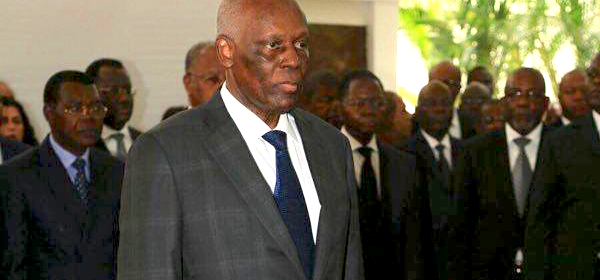The President’s State of Health: A State Secret?

It makes you wonder: just how bad is the Angolan President’s health? Things must be grim if the entire state apparatus zips their lips, leaving it to the big man’s tiny grandson (as quoted in a social media posting by his mother Tchizé dos Santos) to tell the world that “vovó” (his grandpa) is “living a normal life”, “watching the TV news” in Barcelona.
Really? Is that the best the Dos Santos family’s highly-paid Public Relations firms can do? Is this the MPLA’s strategy for deflecting the growing national anxiety about the state of the man and the nation he has ruled for 37 years? If he’s well and living a normal life, then why is he doing so in Spain instead of at home running his government?
The truth, or bits of it, have leaked from multiple sources. At the beginning of this month (May 2017) something happened to the Angolan president that required an overnight emergency flight to Barcelona in the company of his wife, chief of staff, bodyguard. personal doctor and five other specialist doctors from Luanda’s Clinica Multiperfil.
President dos Santos has been in seclusion at a private hospital in Barcelona ever since, notwithstanding optimistic statements from his family and carefully-planted suggestions in the media that he was in Barcelona for a “private visit” (the second this year) and that he was “due to fly home the following Monday” (so far there has been no flight home).
It’s not the first time that the Angolan state apparatus has striven (and failed) to create a ‘cordon sanitaire’ around the question of the President’s health.
Amid conditions of state secrecy and high security, José Eduardo dos Santos has been undergoing treatment in the oncological (cancer) unit of a private hospital in the Catalan capital, Barcelona, since at least 2013 when he had two stays, one of six weeks and one of four weeks for unspecifed treatment (surgery? chemotherapy?) for what multiple sources allege is advanced prostate cancer.
The President was back in 2014 for another of these “private visits”. And again in November 2016 when the unexpected death of his elder brother Avelino dos Santos forced him to interrupt his ‘private visit’ and fly home to Luanda for the funeral before returning once more to Barcelona. By some counts he has had at least six hospital stays (“private visits”) in the Catalan capital.
Angolans with fond memories of Cuba’s assistance to their country, remember that when Fidel Castro was rumored to be in poor health, he would allow himself to be photographed holding a copy of the daily newspaper, Granma.
But then Fidel Castro never had to leave Cuba for treatment because he had overseen the creation of the continent’s best medical system. Clearly President dos Santos must be in no shape to offer a similar proof of life – nor has he left any similar legacy of decent health infrastructure for his homeland.
The man is supposed to be stepping down after 37 lucrative years at the apex of power in Angola. His party has named João Lourenço as the candidate to succeed him in the general election due on August 23. So why, in these final months is it SO important to hide any sign of frailty?
Some point to the fear that any sudden crisis could destabilize Angola just as it prepares for its first peaceful transition of power in four decades.
Others suggest more sinister reasons for the lack of news: medical sources have suggested that the spread of cancer by now is likely to have caused a stroke or a series of mini-strokes that would likely leave the President unable to carry out his duties. So who is really in charge?
If all those who owe their current positions and fortunes to the President fear they might lose immunity from prosecution, or worse, if the “Architect of Peace” (as his supporters like to call him) isn’t around to guarantee their protection, how far would they go to save themselves?
As far as lying to the country about the President’s state of health? As far as keeping a dying man on life support? Further still?
